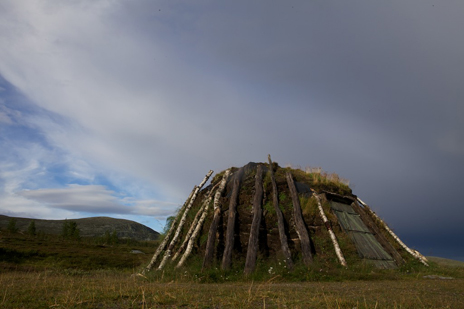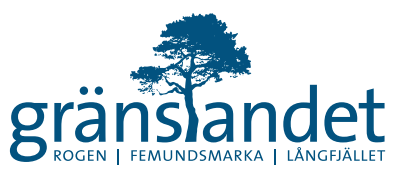 Late summer in Femundsmarka. Photo: Naturcentrum AB.
Late summer in Femundsmarka. Photo: Naturcentrum AB.
Eight seasons
Climate and seasons have always played a significant role in Sami culture. The Sami reindeer herding year is based on eight seasons, included in the Sami language.
Gïjre-daelvie – late winter
In March–April, the reindeer begin to move from their winter pastures to the lower mountains. The reindeer cows enjoy migrating to their old calving grounds. Grazing now consists mainly of hanging lichen, since the ground is still covered by a hard snow crust.
Gïjre – spring
Before calving, the yearlings and male reindeer are separated from the herd. The calves are born in the same place year after year. The reindeer cows select southern slopes with patches of bare ground, where the first spring flowers appear. They graze on food within reach such as lichens, grass, herbs and leaves. This is a sensitive time, and the female may reject her calf if she is disturbed.
Gïjre-giesie – early summer
In June, the reindeer calving is over. The females and their calves make for birch forests, bogs and streams where the greenery comes early. Here they can graze in peace, without being bothered by mosquitoes and other insects.
For the reindeer herdsmen this is time for recovery, and they can carry out jobs such as repairing fences and buildings. This is also the best time for mountain fishing.
Giesie – summer
When the heat of summer arrives, the reindeer move higher up the mountains where it’s cooler and there are fewer insects. When it’s time to round up the reindeer for marking, they are scattered over large areas. The herders use helicopters and motorcycles but also travel on foot.
The reindeer calf follows its mother into the pens, so it’s easy to see who it belongs to. The calves are given the same mark as their mothers. All owners have a unique, registered reindeer mark.
Summer is an intensive and hectic time for reindeer herdsmen who often work round the clock. Calf marking mostly takes place at night, when it’s cooler.
Tjaktje-giesie – late summer
From the end of July the herds scatter. The reindeer move back to birch forests and bogs. Now they must build up their muscle and fat to prepare for the long winter. There is still plenty of nutritious food by way of leaves, grass and herbs. The reindeer are also very fond of fungi, which are rich in protein and phosphorous.
During late August, before the rutting season, male reindeer are rounded up for culling. They are large and fat after the summer grazing.
Tjaktje – autumn
With the frost, the supply of shrubs, grass and leaves dwindles. The reindeer must eat more lichen and can even dig up underground parts of plants such as bogbean and other herbs.
The autumn culling is finished before the rutting season, which begins in the second half of September. The rut lasts for two or three weeks, and during this time the reindeer are left on their own. The herders have time to fish, hunt and carry out other jobs that have to be done before the snow settles.
Tjaktje-daelvie – early winter
Now the snow has come to stay. The reindeer make for places where there is some greenery left, but when the snow becomes too deep they are reduced to eating lichen.
The reindeer are rounded up and divided into groups that will migrate to winter grazing grounds. It’s also time for slaughter, mainly of calves.
Daelvie – winter
During winter the reindeer graze on lichens and brushwood in the forest zone. The grazing areas may be separated by clear-felling, roads, etc. Since the supply of food is determined by snow conditions, the herders must move the reindeer between different grazing areas. Reindeer like visiting cold springs, which are plentiful in Gränslandet, where groundwater seeps through and melts the snow.
A shortage of hanging lichen can result in a serious lack of nutrition during periods when ground pasture is inaccessible. In such situations extra feeding may be necessary.
The reindeer herders may also need to guard around the whole herd by looking at tracks going in and out of the area. In this way they can see if any reindeer have strayed or if predators have been close to the herd.





